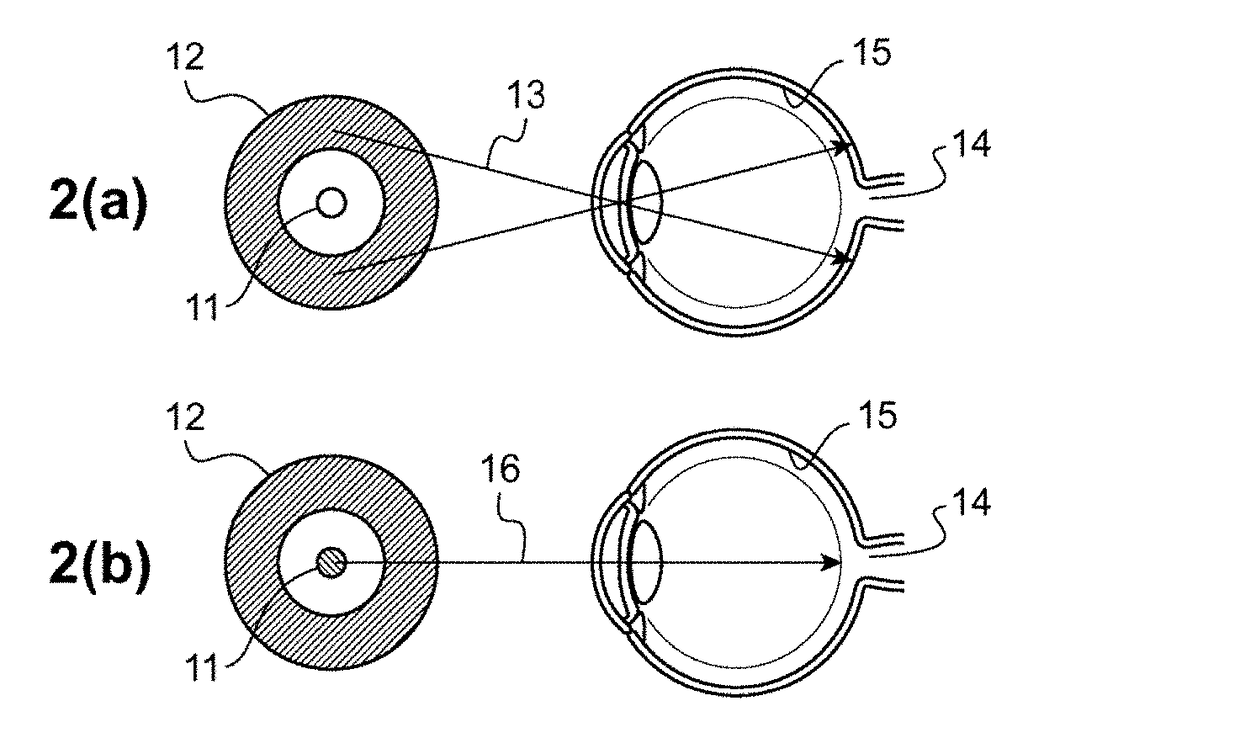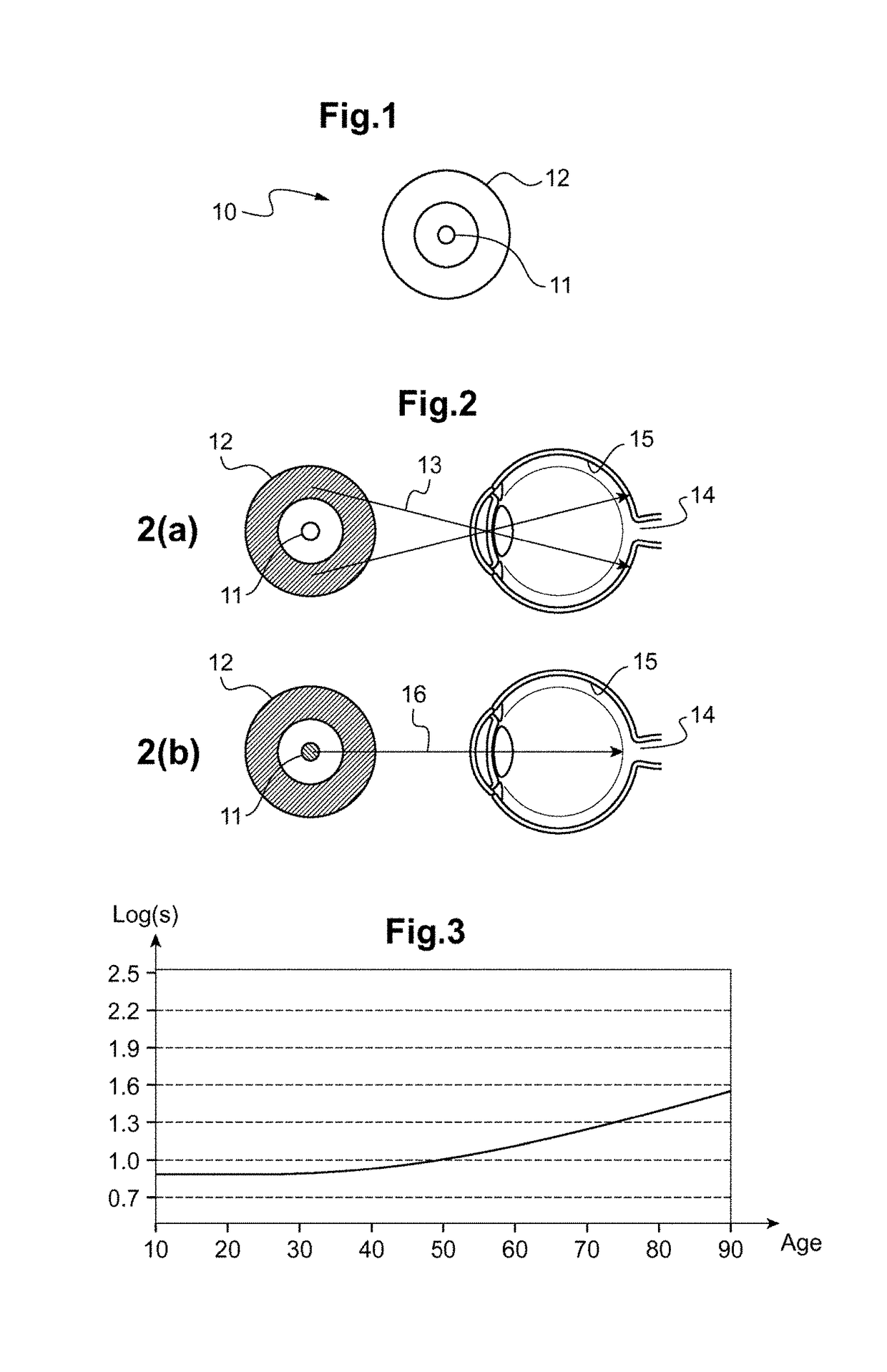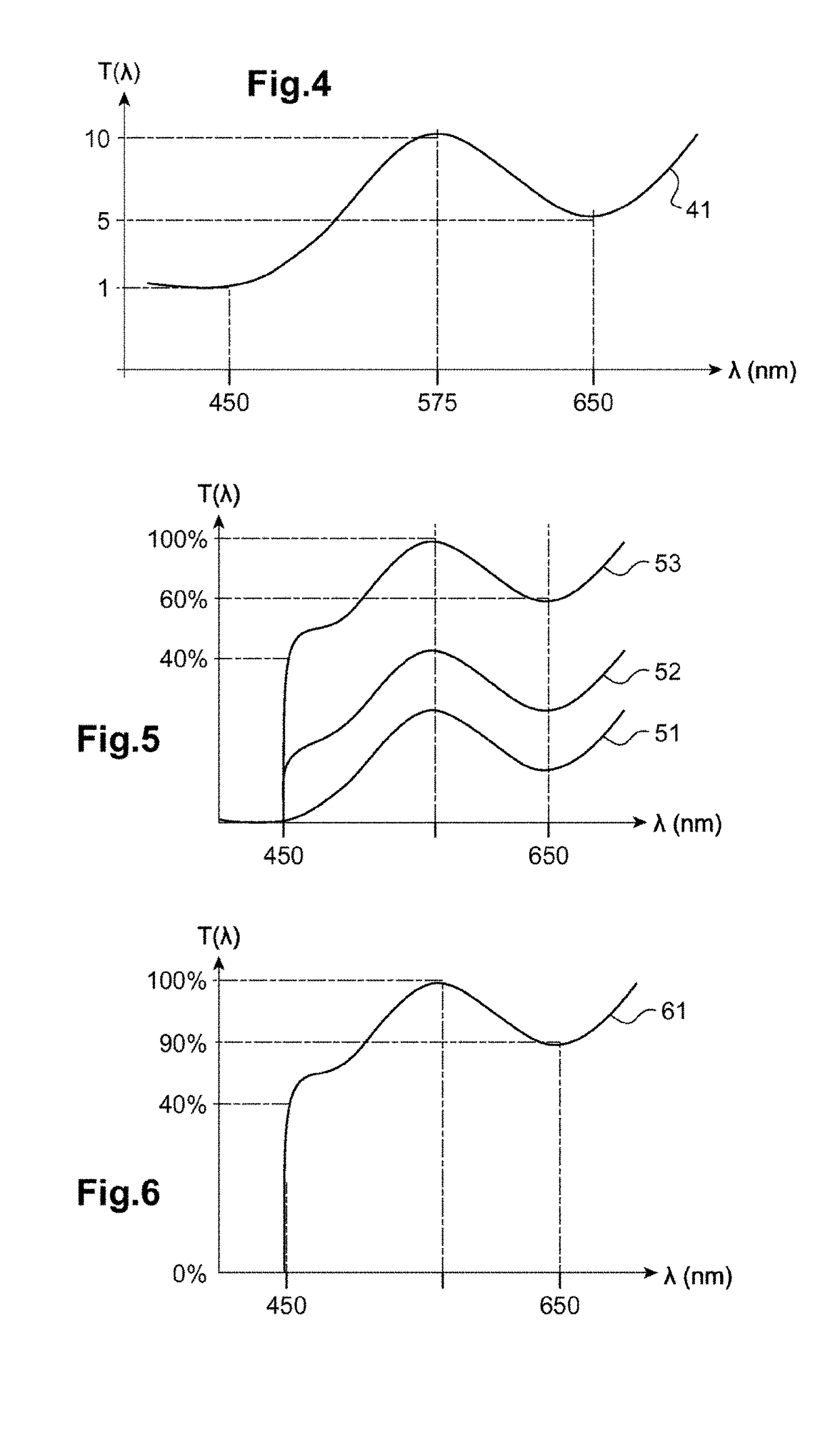Method for determining a filter for an ophthalmic lens and ophthalmic lens comprising such a filter
a technology of ophthalmic lenses and filters, applied in the field of ophthalmic optics, can solve the problems of limited visual comfort and visual performance, and achieve the effect of decreasing the discomforting effect of light and reducing the concentration of macular pigments
- Summary
- Abstract
- Description
- Claims
- Application Information
AI Technical Summary
Benefits of technology
Problems solved by technology
Method used
Image
Examples
example 1
[0138]Scattering, also called spatial spreading, is the property that causes matter, finely divided, to disperse light in all directions.
[0139]When the eye of a wearer is considered, this intraocular scattering may be generated by any of the optical surfaces and any of the transparent media passed through: tears, cornea, aqueous humor, iris, crystalline lens, vitreous body, and retina.
[0140]The loss of transparency of the eye of the wearer may in particular be due to the presence of opacities: cataracts, loss of transparency of the cornea (for example due to keratoconus), or of the vitreous body (floaters). These issues mainly affect elderly wearers because of the ageing of the eye, or else follow a surgical operation.
[0141]Intraocular scattering results in a degradation in visual performance, with in particular a decrease in visual acuity, in contrast sensitivity and in color vision.
[0142]Moreover, the scattering of light in the eye increases the sensitivity of the wearer to light....
example 2
[0191]In this example, a method for determining a filter depending on the sensitivity to glare of a wearer will be described, this sensitivity being determined on the basis of measurements of the density and / or distribution of the macular pigment in the eye of the wearer.
[0192]Macular pigment (MP) is located in the macular zone of the retina, in the central 6° of retinal eccentricity ε (Wolf-Schnurrbusch et al., “Ethnic differences in macular pigment density and distribution”, Invest. Ophthalmol. Vis. Sci. 2007, 48(8), pp. 3783-3787; Bernstein PS, “The value of measurement of macular carotenoid pigment optical densities and distributions in age-related macular degeneration and other retinal disorders”, Vision Res. 2010). It is composed of lutein and zeaxanthin (the carotenoids of the eye). It is located in the outer plexiform layer of the retina and has the role of the absorbing the light flux comprised in a specific wavelength range of between 430 and 480 nm. This macular pigment m...
example 3
[0231]It will be seen in this example that in the measuring step the quantity representative of the sensitivity of the eye of the wearer to the characteristic light flux corresponds to a sensitivity of said wearer to glare.
[0232]Generally, it is known that glare and wearing filters, solar filters for example, impact the vision and visual comfort of a wearer of ophthalmic lenses equipped with such filters.
[0233]By virtue of the determining method of the invention, the spectral response of the filter that allows the vision and comfort of the wearer to be optimized, whatever the intensity of the characteristic light flux, is determined.
[0234]The method also allows the spectral response of the filter, whether it be active or passive, to be personalized depending on the wearer.
[0235]The method proposed here also takes into account the refractive power of the wearer in order to obtain a measurement, which is based on and incorporates the visual performance of this wearer, of the highest p...
PUM
 Login to View More
Login to View More Abstract
Description
Claims
Application Information
 Login to View More
Login to View More - R&D
- Intellectual Property
- Life Sciences
- Materials
- Tech Scout
- Unparalleled Data Quality
- Higher Quality Content
- 60% Fewer Hallucinations
Browse by: Latest US Patents, China's latest patents, Technical Efficacy Thesaurus, Application Domain, Technology Topic, Popular Technical Reports.
© 2025 PatSnap. All rights reserved.Legal|Privacy policy|Modern Slavery Act Transparency Statement|Sitemap|About US| Contact US: help@patsnap.com



